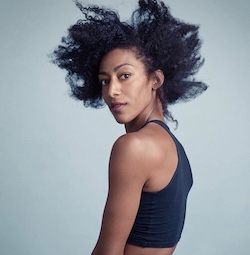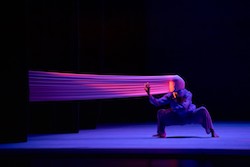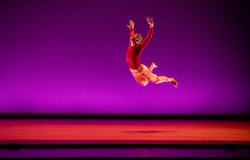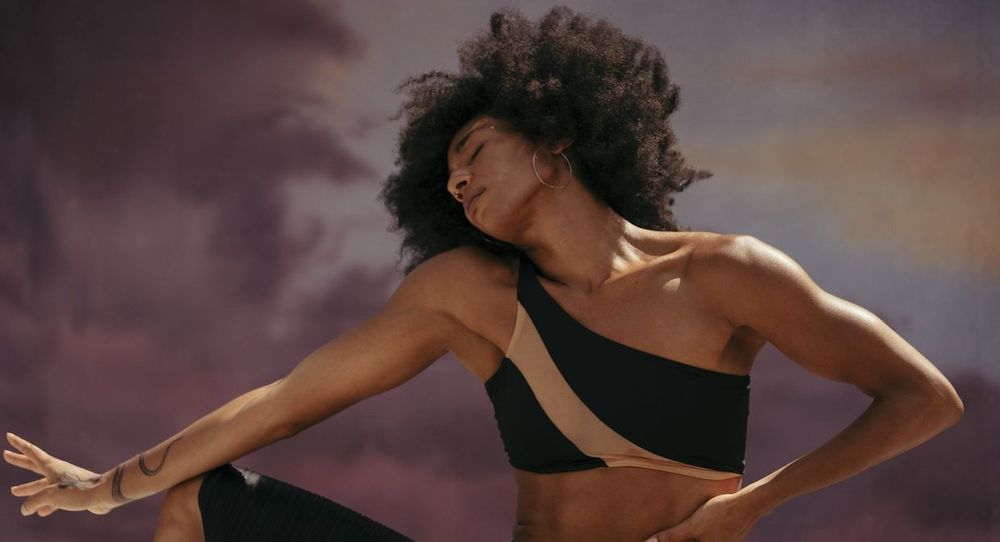You know when a Zoom call turns into a heart-to-heart that you didn’t know you needed? Well, that’s what happened when Dance Informa spoke with the lovely Rena Butler of Gibney Dance Company. From her childhood to her time with major companies like Bill T. Jones/Arnie Zane Company and Hubbard Street Dance Chicago to being a full-time dancer in the midst of a global pandemic, Butler generously shared so much about her life with us. Read on for some of the highlights.
How did you get started in dance?
“I feel like the way I got started is pretty similar to a lot of other dancers. When I was little, I was constantly choreographing dances on my little sisters. We’d cut up construction paper tickets and put on little holiday performances for our family. My parents always pushed us to try a bunch of different things, and as we got older and things got more expensive, it was time to find one or two extracurricular activities to focus on. I come from a big swim team and water polo family, but I decided to stick with dance because I had my hair relaxed and I liked with dance that I could maintain all my cute hairstyles! I cared a lot about looking pretty when I was going through puberty, and was obsessed with becoming a back-up dancer for Janet Jackson. My favorite show was MTV’s Making the Video. I loved learning about how artists like Britney Spears and Missy Elliot made their music videos. I remember critiquing them, pointing out the things I would’ve done differently, thinking I could be on the show.

My love for dance kept growing. I went to The Chicago Academy for the Arts and was also a part-time salsa dancer. For awhile, I wanted to be a ballroom diva, and loved wearing my rhinestone heels, especially because I wasn’t allowed to wear heels outside the studio as a young teen. After graduating high school, I attended SUNY Purchase and loved it. There was a lot of diversity, and the school cared about being progressive and had a really well-rounded curriculum. Purchase cracked my spirit open and further ignited my love for dance while offering more clarity about my trajectory. I also studied abroad in Taipei, Taiwan, and met one of my closest dance connections, Kyle Abraham.”
Can you take us through the quick version of your dance journey? What have been the highlights and most important steps that have gotten you to where you are today?
“I started dancing with Kyle Abraham during my senior year of college and continued working with him for four years. During that time, I also danced for David Dorfman, Bill T. Jones and my partner, Manuel Vignoulle. After incredible experiences with those choreographers, I wanted to try a repertory company. I’ll never forget going to the Hubbard Street Dance Chicago audition five hours after landing back in Chicago after a tour in eastern Europe. Luckily, Manuel gave my jetlagged self the gentle push I needed, and I was hired from that audition. Hubbard Street brought a lot of gifts. When I joined, it had been nine to 10 years since the company had a black female dancer, and it was a big responsibility to step into that role. Working with older, more experienced dancers during my three years at Hubbard, as well as during my time with Bill T., helped me grow up, and learn to own and govern who I was.”
Can you talk about your work with Gibney Dance Company? What does it mean to be an Artistic Associate?

Dance Chicago in Rena Butler’s
‘This, That, and the Third’.
Photo by Cheryl Mann.
“I feel so fortunate to be part of Gibney Dance Company. I don’t know of any other company that pairs advocacy with dance in such a substantial way. My work as an advocate is just as full as my role as a full-time dancer. In addition to dancing from 10am-5pm most days, each company member is responsible for hatching an original idea that serves a need in either the dance community or the community at large. From mentorship to workshops to monetary support, Gibney gives us the resources to develop sustainable advocacy projects, bring our ideas into the real world and develop our own philanthropic identities. My project is a choreographic workshop for teens. I’m passionate about helping young artists develop work that represents themselves and their culture, while asking questions and dialoguing with the world around them.”
What’s your favorite piece you’ve ever performed in, and why?
“Okay, I’m going to give you five. I can’t choose just one! Black and White by Manuel Vignoulle. This piece, choreographed by the love of my life, not only pushed me to new bounds but really felt like a gift to our couple. It changed me as a dancer and a partner.
Story/Time by Bill T. Jones. In this piece, Bill sits in the middle of the stage at a white table dressed in white holding a white book, which he reads stories out of. It’s 70 minutes long, and the order of the piece changes every time it’s performed. We would only get the order one to two hours before the performance, and I loved the challenge and the feeling of live-ness that the structure created.
Everything Kyle Abraham has ever made, but if I had to choose one, then Pavement, which is inspired by boys in the hood.

Dance Chicago in Rena Butler’s
‘This, That, and the Third’.
Photo by Cheryl Mann.
I also love dancing Ohad Naharin’s work. My favorite is Project 5, which is an accumulation of five women in black dresses who keep rotating in space. Within two minutes, your body is dead, but the piece is 15 minutes long. I love the feeling of resilience, of flying inside my own body. There’s a special kind of vibration you get from holding on in that way that reveals something fundamental about who you are. Dance is a direct line of communication into your spirituality, and a mode of communicating with your body. That’s what technique is. Valuing your relationship with your body more than anything else.
And Man in the Waters by Bill T. Jones. When Bill first made this piece, his partner had just passed, and one of his dancers was dying of AIDS. The piece is 40 minutes of nothing but diverolls and petit allegro and running, but I remember thinking, ‘If someone with AIDs could do this, then we can, too.’ It was inspiring to dance about something so heavy and important.”
Can you tell us a little bit about your choreographic work?
“The primary question I ask myself when creating work is, ‘How can I not only highlight the beauty that’s already there in the dancers but also find what they don’t know about themselves that I see and they don’t?’ If I focus on who they are as people, the message will be clear, and the audience will see themselves in it. I want to make choreography that is accessible, and I’m not interested in a homogenized cast. I want to show audiences what the world could look like if we were all dancing. Inclusivity is a word that gets tossed around a lot, especially in today’s political climate, but inclusivity is my whole life, not just a trend. By taking care of one another in abstract and literal ways through dance, we can make a shift in the right direction, even if it’s really small.”
You can follow Rena Butler on Instagram: @renabutler.
By Charly Santagado of Dance Informa.















